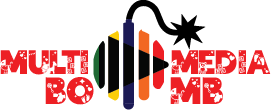BUSINESS & FINANCE
Lease Vs Loan: Which Is Better?
Which is better, a lease vs a loan? This is a question which comes up all of the time, and quite frankly, one is not better than the other. A lease and a loan are actually very similar, in that they are both a means of financing equipment acquisitions.
That being said, a loan is often perceived as a method of purchasing equipment, and a lease is perceived as a method of paying for the use of the equipment. That is true, however, both are a legal financial obligation to make payments for a fixed period of time. Under a loan contract, the user holds title to the equipment, whereas, under a lease contract, title to the equipment is held by the Lessor, otherwise referred to as the leasing company.
Many companies have a desire to own equipment and simply want to buy the equipment outright. In reality, if a loan is used to a purchase equipment, they do in fact hold title to the equipment, however, they do not truly own the asset until the final payment is made.
Over the last number of years, the term “Lease to Own” has become very popular, and in effect, many leasing companies are offering bargain purchase options at the end of term. Where this is the case, the lessee must be cautious in the accounting treatment of the lease, as it may be construed by the Government as a loan agreement.
From an accounting stand point, the equipment acquired under a loan agreement appears as an asset on the balance sheet, however, it is offset by a related debt liability. In the case of leased equipment, the asset does not appear on the balance sheet, and the associated lease payments do not appear as debt but rather, an expense in the income statement. Leasing is often referred to as off balance sheet financing, and in turn has a positive effect on some of the financial ratios such as debt to equity.
Read More:
https://advpr.net/read-blog/44429_roblox-image-ids-ist.html
https://advpr.net/read-blog/44430_image-id-roblox-anime.html
https://advpr.net/read-blog/44431_roblox-image-id-codes.html
https://advpr.net/read-blog/44432_image-ids-for-roblox.html
https://advpr.net/read-blog/44433_roblox-image-id-list.html
Let’s take a look at some of the areas which should be considered when making a decision whether to use a loan or lease to finance equipment.
Interest Rate
At face value, the implicit interest of a loan will be lower than that of a lease. In fact, the loan rates provided by banks, are lower than the leasing division of the same bank. However, lease payments are generally fully tax deductible, and when a proper loan versus lease analysis is performed, the after tax interest rate is much lower in a leasing scenario.
Down Payments
Most banking institutions require anywhere from 10% to 25% of the equipment cost as a down payment. On the other hand, a leasing company will generally provide 100% financing and only require the first or first and last payment at the inception of the contract. An exception to this may occur where the financial fitness of a company is marginal, a leasing company may require some money down in order to undertake the lease.
Additional Credit Facility
When evaluating a loan for equipment, a bank will generally look at the total amount of debt outstanding with a particular client, often referred to as exposure. Banks do have exposure limits based on financial size and strength of the organization, as well as their dealing history. Exposure is always factored this into their credit decisions. If a loan increases the exposure to the upper limit, it may inhibit further use of conventional bank lines of credit for normal operating expenses. By using a 3rd party leasing company to finance an equipment acquisition, a company is able to preserve their conventional credit lines at the and in effect create a new line of credit.
Restrictive Covenants
Most bank loans have many restrictions and covenants, such as maintenance of certain financial ratios, restrictions on future debt and salary restrictions. Additionally, look for “Call” provisions which banks incorporate that give them the right to demand an early payoff of your loan for reasons you have no control over. Leasing has none of these types of provisions.
General Security Agreement
Depending on a number of factors, a bank will often file a General Security Agreement, giving them a security interest on all assets in the company, currently owned as well as those acquired in the future. This restricts our assets including inventory and receivables, and may inhibit dealing with suppliers and other financial institutions. In the case of a leased asset, the leasing files a document called a Personal Property Security Agreement or PPSA, which provides them with interest in the leased asset only.
Read More:
https://advpr.net/read-blog/44434_lite-boxer-review.html
https://advpr.net/read-blog/44435_light-boxer-go.html
https://advpr.net/read-blog/44436_liteboxer-review-2022.html
https://advpr.net/read-blog/44437_bring-it-on-lite-boxer.html
https://advpr.net/read-blog/44438_bring-it-on-light-boxer.html
Tax Implications
In the case of a loan, the asset is capitalized, and listed as an asset on the balance. From a tax stand point, the depreciation and interest on the loan is written for tax purposes. Assets are categorized into classes, and each class has a different allowable depreciation rate. In the first year of the loan, only 50% of the depreciation can be written off as well as the interest portion of the loan. In subsequent years, depreciation can be written off on a declining balance basis.
Lease payments on the other hand, are treated as an expense on the income statement, and are generally written off entirely. This dramatically accelerates the tax write off, and provides a tremendous tax effect over a conventional bank loan.
In summary, there are pros and cons to financing equipment under both a loan or lease agreement. Every situation is different, and as a result, a proper analysis should be performed prior to making a decision.


